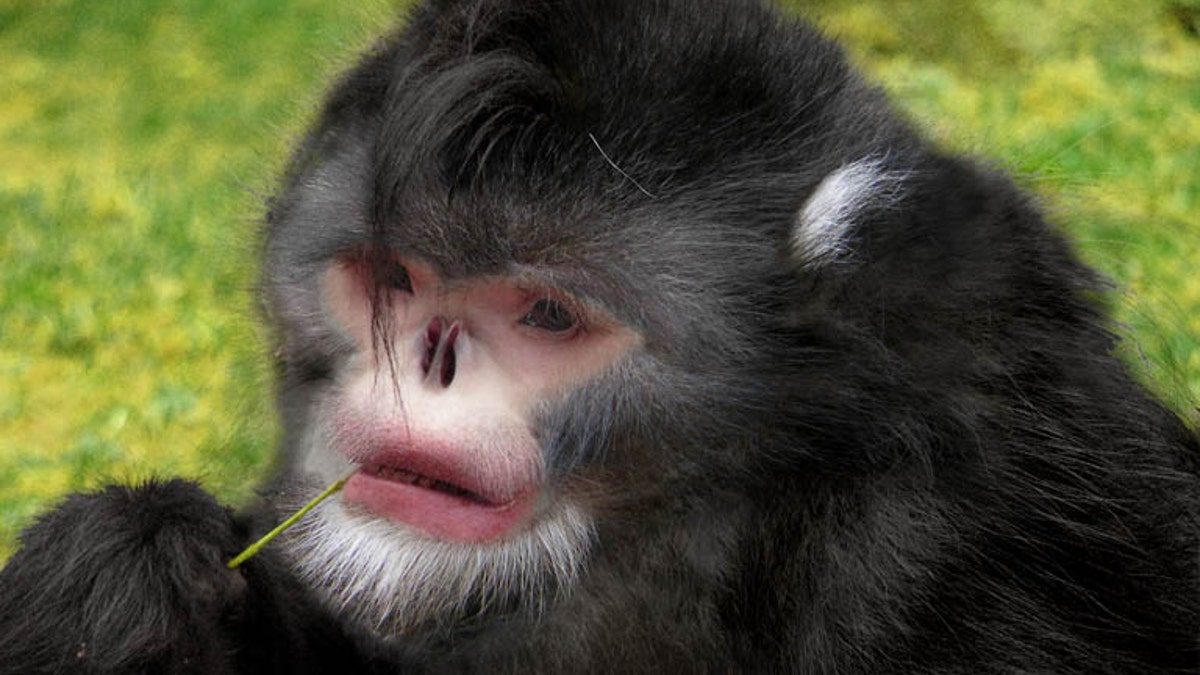
Photoshop reconstruction of the snub-nosed monkey. (Credit: Dr Thomas Geissmann/Fauna & Flora International)
Move over, fall allergies.
Today’s hottest sneeze belongs to a rare breed of monkey. And, it’s enjoying viral status on Facebook.
The snub-nosed monkey is one of 211 new species discovered in the Eastern Himalayas, according to a World Wildlife Fund report. In addition to the monkey, the new species include 133 plants, 39 invertebrates, 26 fish, 10 amphibians, one reptile and one bird.
Located in the Eastern Himalayan region of far north Myanmar, the monkeys are known as Rhinopithecus Strykeri. Scientists first heard of the species in that region in 2010 and have taken to nicknaming them “snubby” due to their snub noses.
Related: Tiny flies create zombie honeybees that take night flights, then die
Local legend goes that the species sneezes during rainstorms because water gets into its upturned noses. As a result, the black and white animals are known to sit with their heads between their knees when it rains.
The World Wildlife Federation (WWF) writes that the monkeys were recently encountered by teams of Fauna & Flora International (FFI) and People Resources and Conservation Foundation (PRCF).
“Little is known about the monkey’s behaviour in the wild, its distribution range, or its value to local communities. Not surprisingly, this species is likely to be classified as critically endangered due to its restricted range and significant hunting pressures,” writes the WWF.
Related: Extinct hippolike creature was prehistoric vacuum cleaner
The monkeys were photographed using camera traps placed in the forested mountains of Kachin state, which borders China. Cameras were placed through a joint effort by FFI, Biodiversity And Nature Conservation Association (BANCA) and People Resources and PRCF.
“As with most of Asia’s rare mammals, the snub-nosed monkeys are threatened by habitat loss and hunting,” writes the WWF.
An additional population of these monkeys was discovered in Lushui County, Yunnan, China in 2011.
